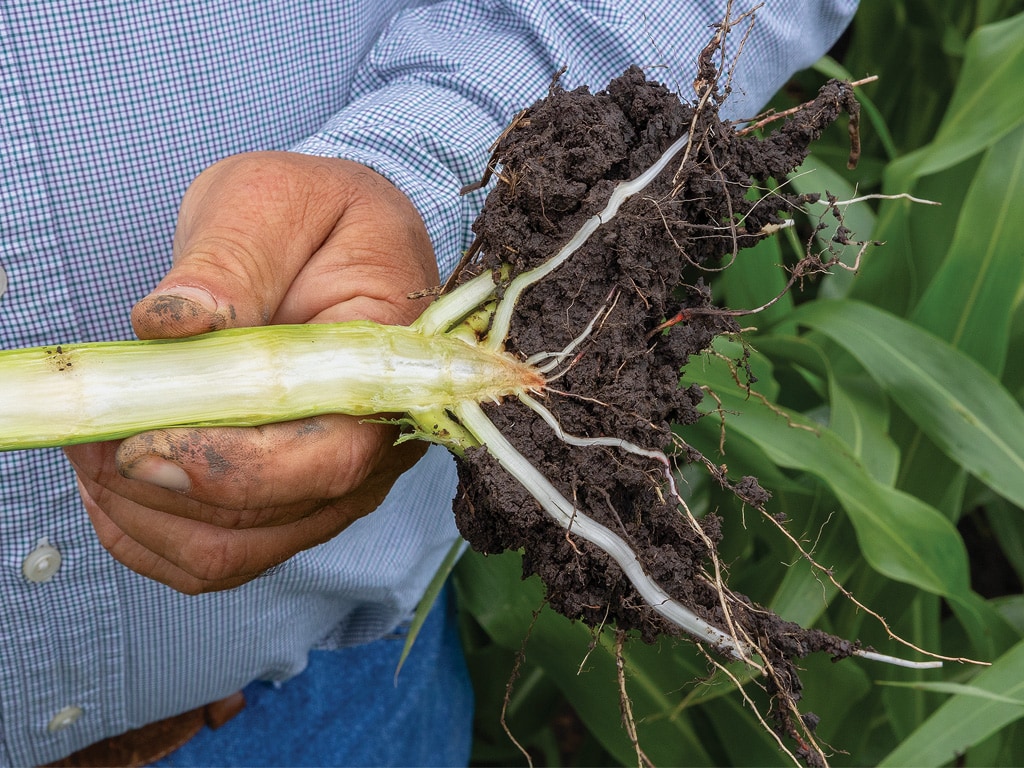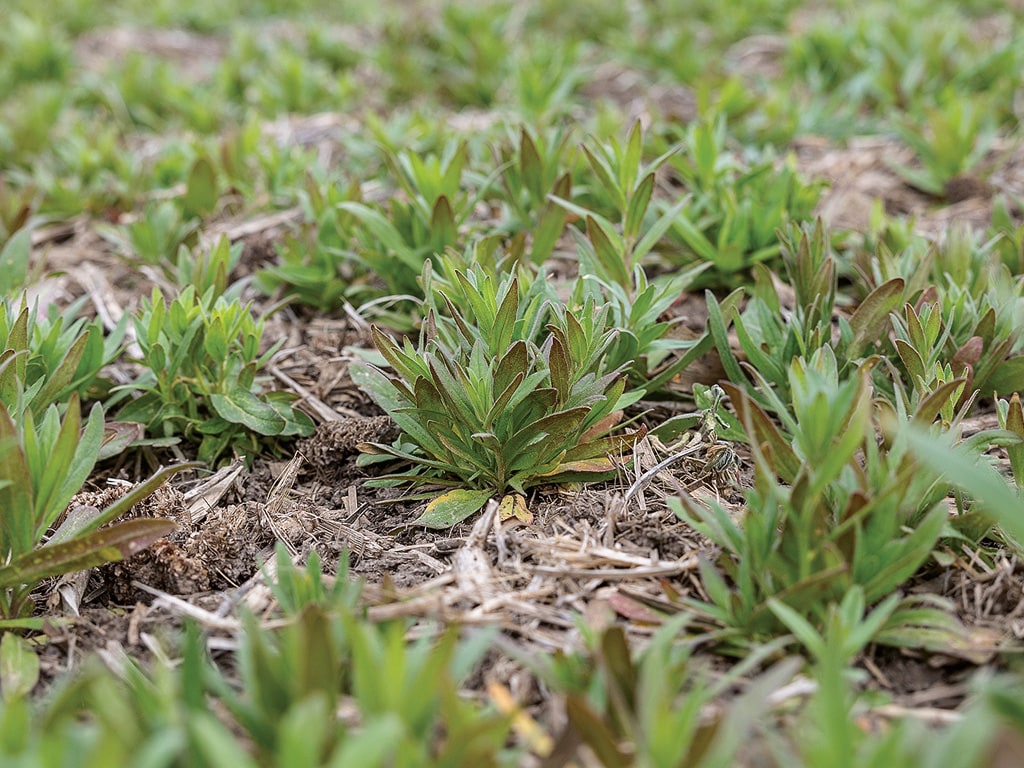Agriculture, Education November 01, 2024
Camelina Connection
This tiny oilseed crop can be a boon to renewable fuels.
by Bill Spiegel
Corn and soybean crop rotations are nothing new. Getting a third cash crop in that two-year cycle? Well, that's novel.
At least, it is to Robert Harvey.
For three years, the Redfield, Iowa, farmer has tested planting camelina—a winter oilseed—after fall harvest, harvesting that crop the following June. Meanwhile, he interseeds soybeans into the growing camelina in May, harvesting that crop in the fall.
"I'm 67 years old and this is the first time I've combined three crops in two years," he says. Harvey's interest in camelina was piqued by an agronomist at a local co-op. She offered free seed if he was willing to try the crop on 10 acres, so his upfront cost was minimal. He typically plants a cover crop after harvest and thought camelina could be an alternative to cereal rye.
His first effort was planting Oct. 7, 2022. Harvey planted about 8 pounds per acre, using a no-till drill with 10-inch row spacing, planting three-quarters of an inch deep.
"It's awful hard in the fall to get a sense if you have a good crop," Harvey says. "Once it germinates, it stays pretty small for about a month."
Most agronomists recommend applying five pounds of nitrogen for each 100 pounds of expected crop yield. The crop stayed weed-free until May, when he planted soybeans on 30-inch rows into the standing camelina.
At camelina harvest time, that crop was 24- to 28-inches tall while the soybeans were 8- to 10-inches tall. He harvested the camelina by placing the combine platform just above the soybeans.
Above. Harvey's system includes either interseeding soybeans into camelina or waiting until the crop is harvested to plant the soybeans. Camelina seed is extremely small, requiring extra care during planting and harvest. It is becoming a popular feedstock for renewable fuels, particularly in aviation and biodiesel.
Camelina lessons. By the time Harvey cleaned the camelina harvest, he estimates the crop yielded about 200 pounds per acre. Later that fall, soybean yields averaged 95% of normal.
On most commercial farms where camelina is a primary crop, yields range from 800 to 1,500 pounds per acre. Harvey's interseeded effort produced less, but he considers it a win.
He saved a herbicide pass and found camelina diversifies the corn-soybean rotation.
"We just keep selecting for the same weeds and pests and then end up fighting them," he says. "We have just got to find a way to not be fighting everything."
In the summer of 2024, Harvey harvested his second camelina crop. In year two, he planted oats right after the camelina crop was seeded; roots from that grass cover crop helped prevent erosion, plus it died in the winter. He also sprayed a half rate of Dual and Prowl in the spring to provide residual weed control in the cash crop soybeans, which he waited to plant until after the camelina was harvested. That practice improved camelina harvest efficiency, although it is still necessary to clean those seeds.
It's not an easy crop to grow. With such tiny seeds, accurate planting and stand establishment is a challenge, particularly in high-residue, no-till is a challenge. "You can't have skips or spaces, because while camelina will suppress weeds, it won't crowd them out," he says.
Camelina is an oilseed, highly resistant to cold weather and quick to mature. It is a darling of the renewable fuel movement due to its ability to withstand drought and short (85 to 100 day) life cycle. It also doesn't require much fertilizer and can thrive in poor soil conditions, according to Yield 10 Bioscience.
Why camelina? A host of public and private entities are conducting research on the crop's use as a renewable fuel feedstock. In tests by the U.S. Air Force, camelina-based jet fuel reduced carbon emissions by 75% compared to petroleum. Sustainable Oils, a Montana group that claims to be the world's largest developer of camelina, estimates camelina acres needed for biomass-based diesel could top a million acres. Its parent company, GlobalClean Energy Holdings, has a multi-year agreement with ExxonMobil, which will buy as many as 220 million gallons of renewable diesel made from Sustainable Oils Camelina per year.
Crushed camelina also is a good choice for poultry and cattle feed, as it is high in protein and vitamin E, plus rich in omega 3 fatty acids.
Harvey is more intrigued with finding another profitable enterprise than he is in growing an energy crop or livestock feed.
He produces enough seed to save back and plant again, with a little surplus he can sell to neighbors for cover crop seed.
"It is just interesting for me to play around with the concept," he says. "It's starting to work." ‡
Read More

AGRICULTURE, SUSTAINABILITY
Farmers Fueling the Future Part 2: Conservation Legacy
Innovation legacy powers Kansas farm.

AGRICULTURE, FARM OPERATION
Going Against the Grain
First generation farmer finds footing with sod.



